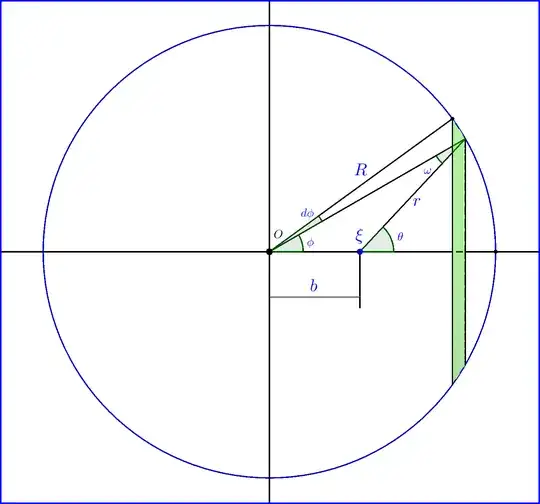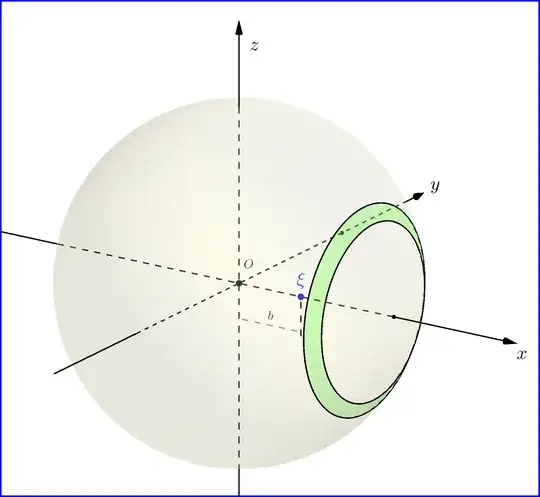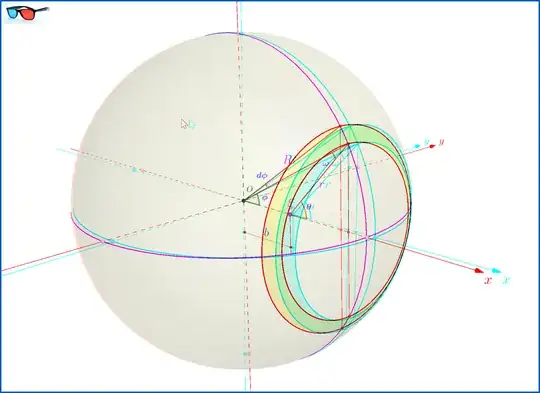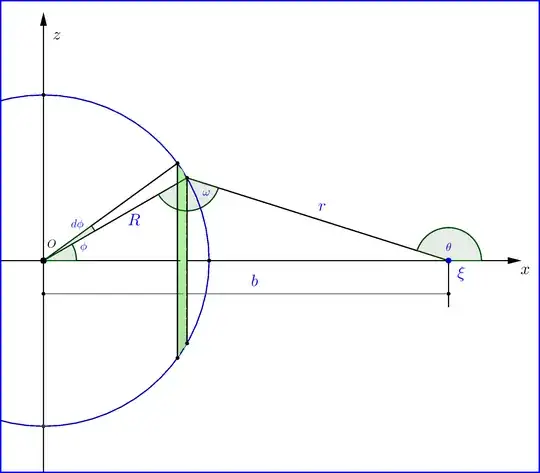Hints :
Although you could solve your problem by direct volume integration, I suggest to work first the problem to find the electric field inside and outside of a sphere with uniform surface charge density $\:\rho_{s}\:$. You'll end up with a very simple result for each case. Using these results you'll find the answers for a sphere with uniform volume charge density $\:\rho_{v}\:$ very easy.
(1) To find the field inside a sphere with uniform surface charge density $\:\rho_{s}\:$ : Three Figures and first steps are given below.



A point charge $\xi$ is located on the $x$-axis at a distance $b\left(\leq R\right)$ from the center $O$ of the sphere of radius $\:R\:$, origin of a $Oxyz$ Cartesian coordinates system. The charge of the infinitesimal ring, $\mathrm{d}\Xi_{ring}$, is
\begin{equation}
\mathrm{d}\Xi_{ring}=\rho_{s}\,\mathrm{d}{\rm{S}}_{ring}
\tag{01}
\end{equation}
where $\mathrm{dS}_{ring}$ the area of the infinitesimal ring. This ring has perimeter $2\pi R\sin\phi=2\pi\; r\sin\theta$ and width $R\,\mathrm{d}\phi$ so
\begin{equation}
\mathrm{dS}_{ring}=2\pi R^{2}\sin\phi\,\mathrm{d}\phi = 2\pi R\, r \sin\theta\, \mathrm{d}\phi
\tag{02}
\end{equation}
and
\begin{equation}
\mathrm{d}\Xi_{ring}=2\pi \rho_{s} R^{2}\sin\phi\,\mathrm{d}\phi = 2\pi\rho_{s}R\,r \sin\theta\,\mathrm{d}\phi
\tag{03}
\end{equation}
The force $\mathrm{dF}_{ring}$ exerted by the infinitesimal ring on the point charge $\xi$ is along the $x$-axis of absolute value
\begin{equation}
\mathrm{dF}_{ring}=k\cdot\dfrac{\xi\cdot \mathrm{d}\Xi_{ring} }{r^{2}}\cos\theta=\left(2\pi k \rho_{s}\xi R^{2}\right)\dfrac{\cos\theta}{r^{2}}\sin\phi \,\mathrm{d}\phi
\tag{04}
\end{equation}
From this point is up to you to integrate and find a very simple result.
(Don't be disappointed : although simple trigonometry, it's a difficult step.)
(2) To find the field outside a sphere with uniform surface charge density $\:\rho_{s}\:$ : One Figure is given below.




